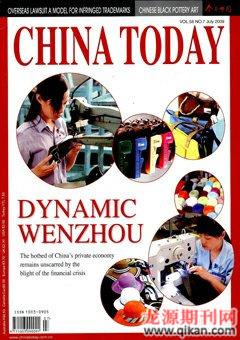“Brilliance of Hebei”Unfolds the “Cultural Gateway to China”
CHEN SIJIA
THE first program of the “Cultural Gateway to China” opened to the public in the Beijing Capital International Airport last April, with the “Brilliance of Hebei”, an exhibition and performance staged at the Beijing Capital International Airport, turning out to be more than just a nice distraction for travellers. The full-scale production was an unqualified hit – a real draw for admiring passengers who turned the airport lounge into a kind of temporary club.

Thousands of air travelers from every corner of the world mill about Beijings new terminus everyday, making it an ideal spot for a cultural showcase. The airport is working with provincial authorities and cultural organizations to promote Chinas ancient and dynamic culture to these transient goodwill messengers. Hebei, as the environs of the nations capital, became the first civic partner in the cultural co-venture.
Hebei has always been regarded as a place of great strategic importance. In wartime it was a blood-soaked battlefield; in peace, a busy and prosperous home to the capital and all who had business there. Naturally Hebei culture is both bold and optimistic. One of its symbols is the dancing lion. In a traditional ritual, to the rhythm of drums and gongs, a red lion and a green one leap around and chase after the ball in the lion tamers hand. Their athletic antics include comic pauses to scratch their heads before resuming the contest. The “Brilliance of Hebei” opened with this kind of “lion dance,” earning wild applause from the crowd.
The rest of the performances were likely less familiar to urban-dwellers from the outside world. They included Jingxing lahua (a folk dance originating in Jingxing County), traditional acrobatics, rope escape magic, and Yang-style taiji boxing demonstration. Chinese musical instruments like the erhu, pipa, zheng and dulcimer brought the scores to life. Many of the folk performance genres have been listed in the nations intangible cultural heritage, and won copious awards in China and abroad.
Regarding the features selected for this show, Vice Director of Hebei Provincial Information Office Xia Wenyi commented, “Hebei boasts many iconic cultural resources, like the Great Wall and Qing Imperial tombs. We carefully chose local arts that also represent Hebeis distinctiveness.”

Besides performances, the organizers mounted photo and artifact exhibitions in all three terminals, catering to customers with a variety of interests. In the corridor between Terminal 1 and 2, where domestic passengers usually pass by, detailed introductions to tourist spots and cities in the province were displayed, including its achievements in sports, the economy and social development. In the departure area of Terminal 2, an array of cultural relics and objects were exhibited, including exquisite porcelains from Tangshan and Handan, Yishui ink-slabs, and Hengshui interior snuff-bottle paintings. International travelers in the Terminal 3 departure area were treated to folk handicrafts, demonstrations of papercuts, the making of New Year woodblock prints, reed weaving, leather patchwork, and clay and dough figurine construction.
“Culture is a growth industry that can help companies make it through the current crisis as well as entertain and inform waiting passengers,” said Liu Yanbin, vice secretary of the Party Committee of Capital Airports Holding Company and secretary of the Party Committee of Beijing Capital International Airport Co., Ltd. The airport plans to make the “Cultural Gateway to China” the brand name for the countrys cultural showcases. The airport authority regards the transmission of heritage as an enterprises responsibility to the nation.
A follow-up study shows airport users satisfaction has increased by a large margin since the program opened. “Now we can enjoy the marvelous Chinese culture when waiting for flights. It would be even better to see more variety,” enthused an American traveler. In response to feedback, the airport added foreign language translations and interpretations.
Besides cultural exhibitions, economic and social development showcasing is essential. Through this exhibition, visitors saw the history of Hebeis modernization, from its economic rise in the coastal areas to its manufacturing miracles. Spreading knowledge about Hebei is expected to attract more economic opportunities to the province.

